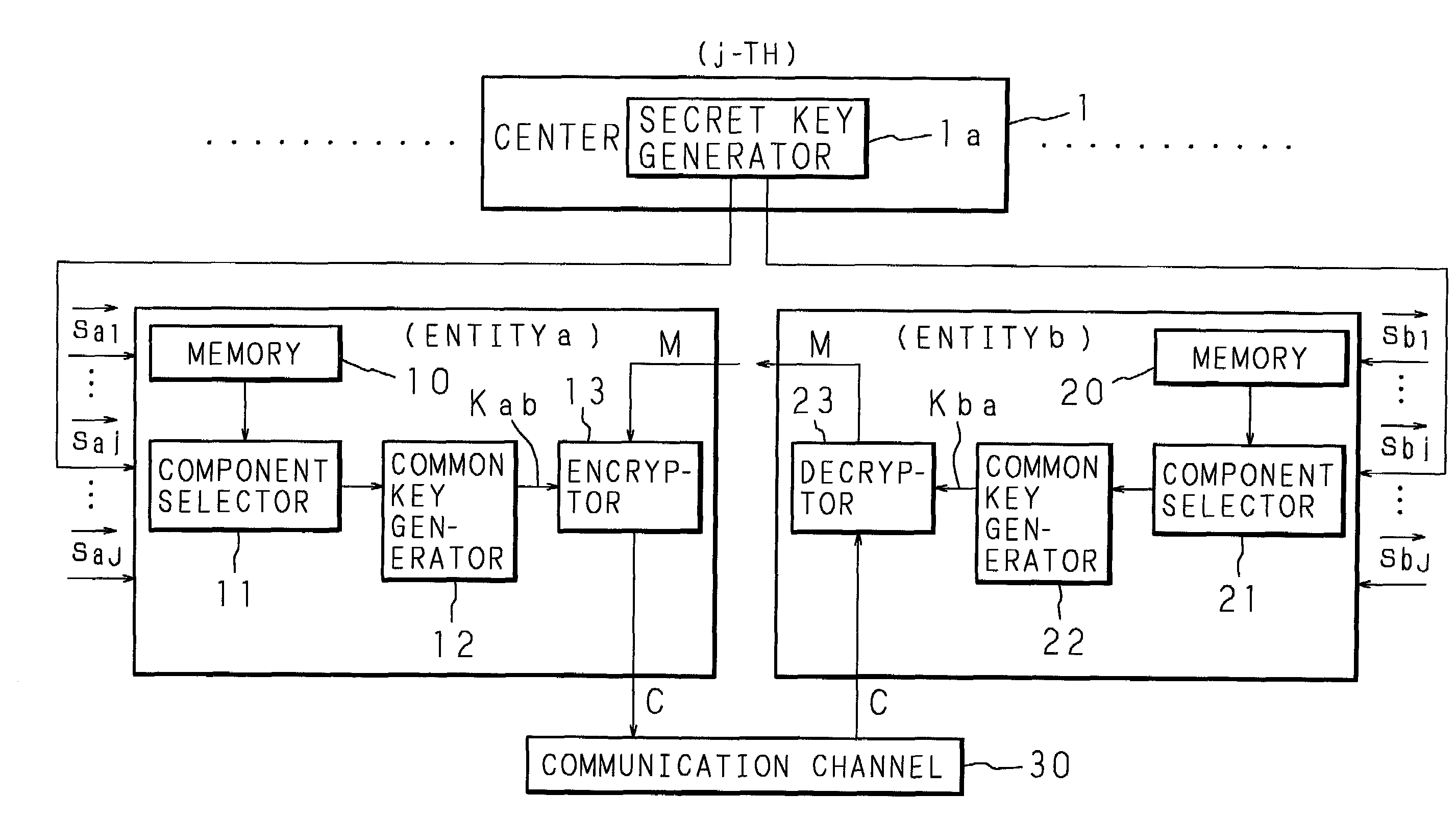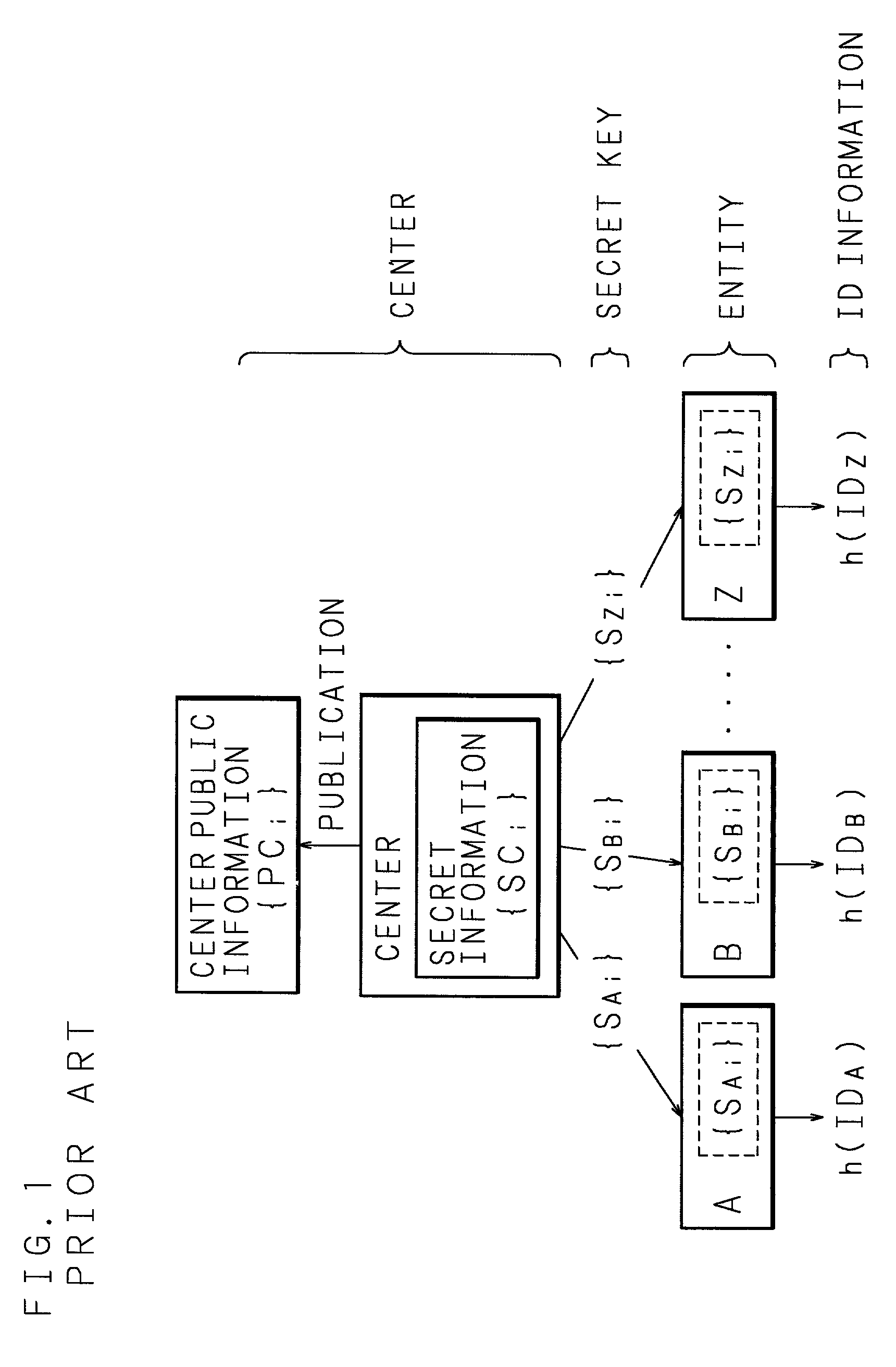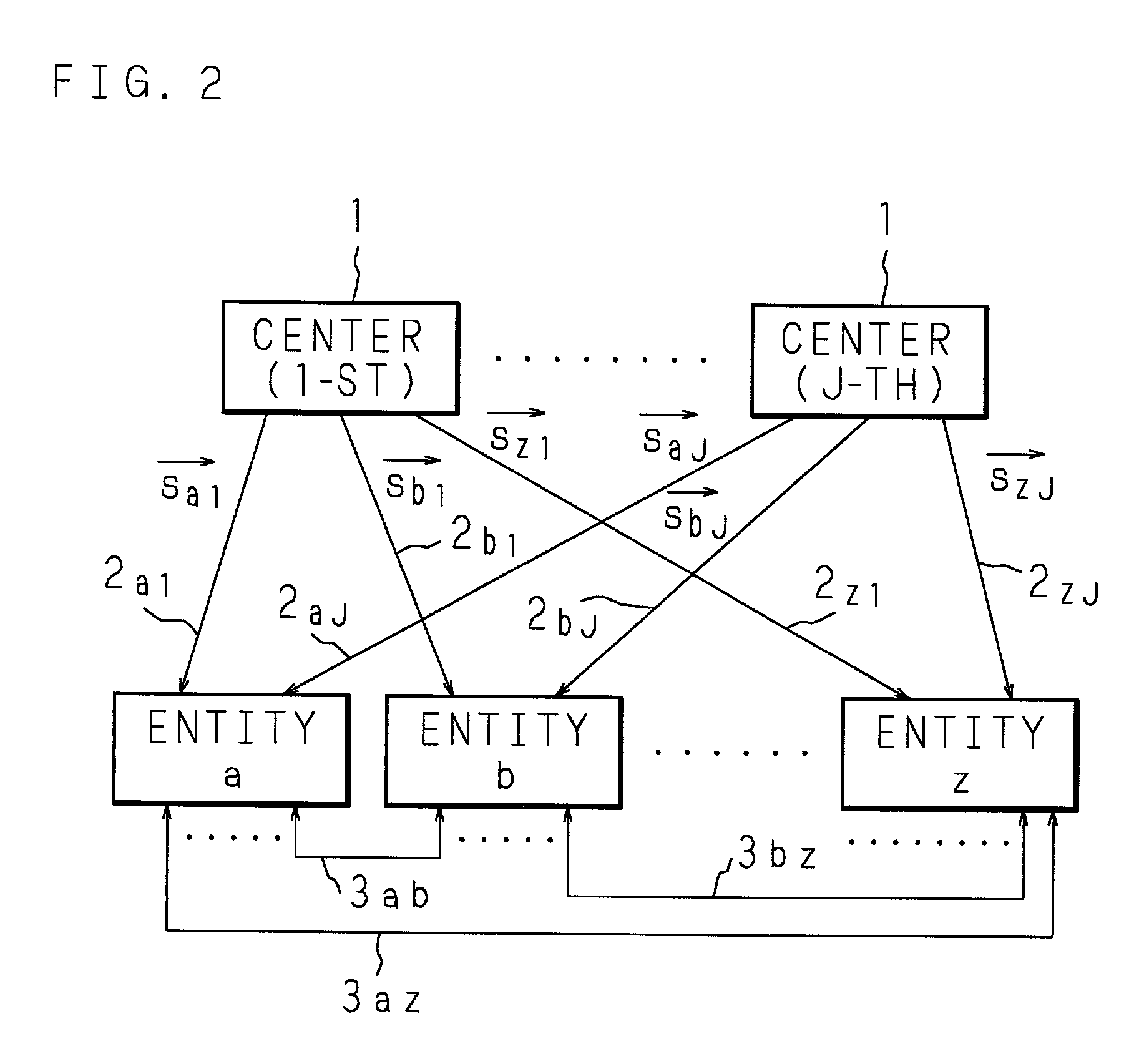Secret key generating method, common key generating method, encryption method, cryptographic communication method and cryptographic communication system
- Summary
- Abstract
- Description
- Claims
- Application Information
AI Technical Summary
Benefits of technology
Problems solved by technology
Method used
Image
Examples
first embodiment
(First Embodiment)
[Generation and Distribution Processing of Secret Key]
[0044]The j-th center 1 generates a symmetric matrix Hj(2M×2M) which has random numbers as its elements. Here, the size of the common key is assumed to be S so as to satisfy the conditions of the above (2) to (4).
[0045]In addition, the j-th center 1 generates a hash function fj(•) which outputs S bits so as to be secretly sent to the next (j+1)-th center 1. Here, the J-th center 1 sends to the first center 1.
[0046]Then, the j-th center 1 extracts a row vector, which corresponds to the ID division vector of the entity a, from the symmetric matrix Hj and carries out XOR on all of the components of the extracted row vector with an individual random number αa(j) so as to be generated as a secret key vector saj, which is secretly distributed to the entity a.
[0047]That is to say, the following (6) is distributed as a secret key vector saj with respect to m=0, 1, 2, . . . , 2M−1. Here, αa(j) is set as in the following ...
second embodiment
(Second Embodiment)
[Generation and Distribution Processing of Secret Key]
[0051]The j-th center 1 generates a symmetric matrix Hj in the same way as in the First Embodiment. Here, a function gj(•) which outputs S bits is generated and made public.
[0052]Then the j-th center 1 extracts a row vector, which corresponds to the ID division vector of the entity a, from the symmetric matrix Hj so that all of the components of the extracted row vector are masked according to a bit pattern of gj(IDa) so as to be generated as a secret key vector saj, which is secretly distributed to the entity a. Here, the mask processing is an AND operation for each bit.
[Generation of Common Key (Key Sharing)]
[0053]The entity a extracts components, which correspond to the entity b, from the secret vectors received from respective J centers, and with respect to these components gj(IDb) is masked for each component of its own secret keys, of which the values are synthesized through XOR from j=1 to j=J so as to g...
third embodiment
(Third Embodiment)
[0056]The Third Embodiment which is achieved by combining the above described First Embodiment and Second Embodiment is described. This Third Embodiment has the characteristic that a random number substitution attack will not succeed.
[Generation and Distribution Processing of Secret Key]
[0057]The j-th center 1 generates a symmetric matrix Hj in the same way as in the First Embodiment. In addition, the j-th center 1 generates a hash function fj(•) which outputs S bits so as to be secretly sent to the next (j+1)-th center 1. Here, the J-th center 1 sends to the first center 1. In addition, a function gj(•) which outputs S bits is generated and made public.
[0058]Then, the j-th center 1 extracts a row vector, which corresponds to the ID division vector of the entity a, from the symmetric matrix Hj so that all of the components of the extracted row vector are masked according to a bit pattern of gj(IDa) and, in addition, XOR is carried out on an individual random number...
PUM
 Login to View More
Login to View More Abstract
Description
Claims
Application Information
 Login to View More
Login to View More - R&D
- Intellectual Property
- Life Sciences
- Materials
- Tech Scout
- Unparalleled Data Quality
- Higher Quality Content
- 60% Fewer Hallucinations
Browse by: Latest US Patents, China's latest patents, Technical Efficacy Thesaurus, Application Domain, Technology Topic, Popular Technical Reports.
© 2025 PatSnap. All rights reserved.Legal|Privacy policy|Modern Slavery Act Transparency Statement|Sitemap|About US| Contact US: help@patsnap.com



